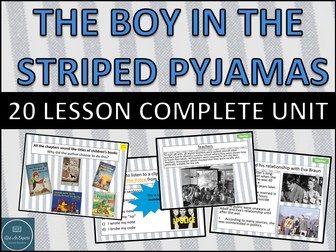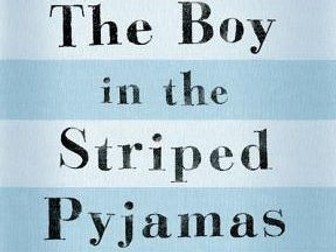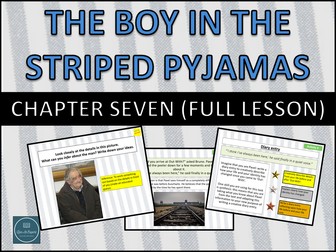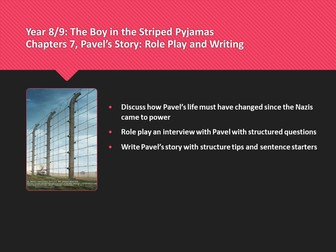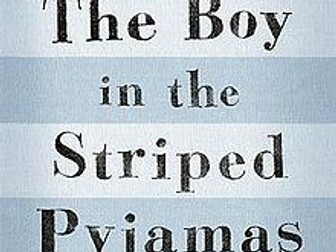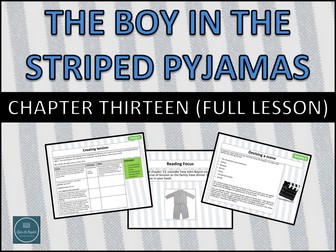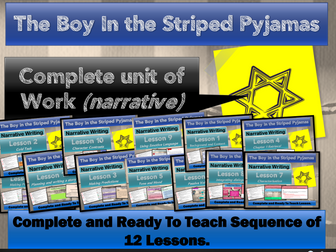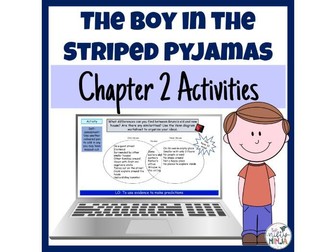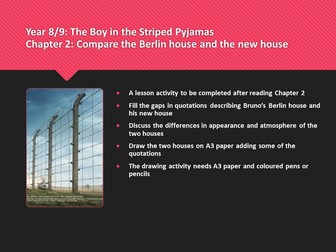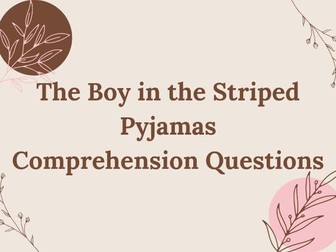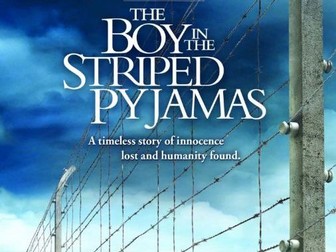
The Boy in the Striped Pyjamas
The Boy in the Striped Pyjamas is a complete 14 lesson scheme of work with a 149 slide PowerPoint presentation and a 32-page booklet of worksheets.
It includes:
Analysis of the characters of Bruno, Father, Gretel and Lieutenant Kotler
Extension activities for G and T pupils
Starter and plenary activities
Historical context understanding research activity
Developing inference and deduction skills through The Boy in the Striped Pyjamas
Empathetic writing - a letter to Grandmother and Bruno's diary
Hotseating to develop character knowledge and understanding
Analysing John Boyne's use of language and contrast in The Boy in the Striped Pyjamas
Speaking and Listening tasks - Bruno and Shmuel's conversations
Writing a book review for The Boy in the Striped Pyjamas

